Things to do in Santiago de Cuba
There is a wonderful variety of things to see and do in Santiago de Cuba, but it's particularly exciting for history buffs, especially those interested in its military and revolutionary past. The Castillo de San Pedro Del Morro (Morro Castle) is an astounding ancient fortress; it is difficult not to imagine battles with fearsome pirates when strolling along the battlements.
There are other worthwhile historical attractions in Santiago, such as the famous Moncada Barracks where Castro's revolution officially began, Santiago's Plaza de la Revolucion and its impressive monuments, and the Santa Ifigenia Cemetery, which houses the graves of many important Cuban figures such as Jose Martí, Fidel Castro and Carlos Manuel de Cespedes.
There are also a number of museums worth visiting in Santiago. The Diego Velazquez Museum, possibly the oldest house in Cuba, gives remarkable insight into colonial domestic life and the history of the city; and the Bacardi Museum offers a glimpse into the private collection of one of the most famous families of Santiago. The imposing Metropolitan Cathedral in the centre of town is also definitely worth exploring.
The cultural and historical attractions of Santiago are matched by the natural surroundings of the city, drawing tourists from far and wide. The vast Baconao Park has plenty of natural splendour as well as many historical and cultural sites. Travellers making an excursion a little further afield will come across the Parque Nacional Alejandro de Humboldt, an awe-inspiring wilderness and UNESCO World Heritage Site widely hailed as the most valuable and biodiverse park in the Caribbean.
Santiago de Cuba is a treasure trove for tourists and the fact that it is still slightly less crowded and commercial than Havana adds to its charm.
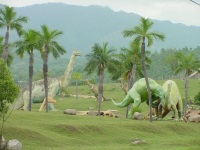
Baconao Park
Baconao Park is a World Heritage Biosphere Reserve that boasts teeming wildlife refuges, coffee plantations and history exhibits. The park features varied attractions, from life-si…
Baconao Park
Baconao Park is a World Heritage Biosphere Reserve that boasts teeming wildlife refuges, coffee plantations and history exhibits. The park features varied attractions, from life-size dinosaur models lurking in the lush vegetation to a museum dedicated to the 26th of July Movement, which is regarded as the beginning of the Cuban Revolution and occurred right here in the region. Climbing the 459 steps to the summit of La Gran Piedra some 4,049ft (1,234m) above sea level may even afford travellers the chance to see the twinkling lights of Jamaica on a clear night sky. The Jardin Ave de Paraiso is a magnificent 45 hectare (111-acre) garden dating from 1860. The park also contains an aquarium and a car museum.
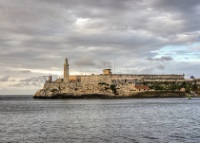
Castillo de San Pedro del Morro (Morro Castle)
Santiago's most impressive structure is poised ominously atop the cliffs at the narrow entrance to Santiago Bay. This enormous piece of military architecture, a maze of stairways a…
Castillo de San Pedro del Morro (Morro Castle)
Santiago's most impressive structure is poised ominously atop the cliffs at the narrow entrance to Santiago Bay. This enormous piece of military architecture, a maze of stairways and dungeons, was begun in 1640 and originally built to defend the bay from pirates and naval attack. It now houses the Museum of Piracy, featuring fascinating displays on piracy, colonialism and slavery, as well as old blunderbusses, muskets, cutlasses and Toledo blades in glass cases. The castle is one of the best-preserved 17th-century Spanish fortresses in the world and it has been declared a UNESCO World Heritage Site.
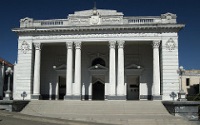
Emilio Bacardi Moreau Museum
The world's largest family-owned spirits company, Bacardi started producing rum in Santiago way back in 1862. Forced to flee the country after the Cuban Revolution in 1959, Bacardi…
Emilio Bacardi Moreau Museum
The world's largest family-owned spirits company, Bacardi started producing rum in Santiago way back in 1862. Forced to flee the country after the Cuban Revolution in 1959, Bacardi drinks aren't found in Cuba today, but the brand still strongly associates itself with the country. The Emilio Bacardi Moreau Museum houses the patriarch's private art and antique collections, serving not as a rum museum but as an insight into the life of the famous family's historical artefacts. While there aren't distillery tours, the original factory still stands in Santiago where no doubt the fruit bats that inspired the world-famous Bacardi logo still nest in its rafters.
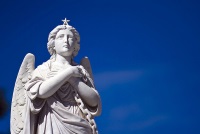
Santa Ifigenia Cemetery
Santa Ifigenia Cemetery was founded in 1868 and declared a National Monument in 1937, now sheltering a number of important historical and cultural figures including war heroes and …
Santa Ifigenia Cemetery
Santa Ifigenia Cemetery was founded in 1868 and declared a National Monument in 1937, now sheltering a number of important historical and cultural figures including war heroes and famous politicians and artists. The gateway is dominated by a memorial to Cuban soldiers who died fighting in Angola. The visitor is then led to the impressive tomb of Cuban national hero José Martí, the six sides of its tower each representing one of Cuba's original provinces. The round mausoleum is designed so that the sun will always shine on Marti's casket, which is draped with the Cuban flag. The cemetery also contains a shrine to the Virgin of Charity, Cuba's patron saint, in the form of the Basilica del Cobre.
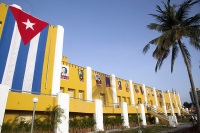
Moncada Barracks
The bullet-ridden Moncada Barracks and adjacent Parque Historico Abel Santamaria were the settings for the most important events in Cuba's revolutionary history. In 1953, a group l…
Moncada Barracks
The bullet-ridden Moncada Barracks and adjacent Parque Historico Abel Santamaria were the settings for the most important events in Cuba's revolutionary history. In 1953, a group led by Fidel Castro attacked the barracks in an attempt to launch the revolution, but the plan failed and many were captured, tortured or killed by Batista's army. Castro himself was later tried in the Escuela de Enfermeras for leading the attack, and this is when he wrote his famous 'History Will Absolve Me' speech. This botched attack is widely considered to mark the beginning of the Cuban Revolution and the date of the attack, 26 July, was adopted by Castro as the name for the revolutionary movement that overthrew Batista's dictatorship in 1959.
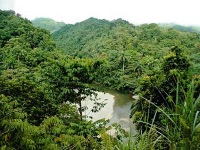
Parque Nacional Alejandro de Humboldt
This UNESCO World Heritage Site is located in the Cuban provinces of Holguín and Guantánamo, and features impressive flora and fauna, such as parrots, lizards and hummingbirds un…
Parque Nacional Alejandro de Humboldt
This UNESCO World Heritage Site is located in the Cuban provinces of Holguín and Guantánamo, and features impressive flora and fauna, such as parrots, lizards and hummingbirds unique to the area. The amount of endemic species in the park has made it one of the most valuable areas in the world for research and conservation. Its extreme humidity and incredibly varied topography are what make it so hospitable to the magnificent diversity of species. It's widely hailed as the most important nature reserve in the Caribbean, remaining unspoilt by human settlement. A guide is compulsory when touring the reserve, and tourists find it hard to resist its pristine waterfalls and stunning natural rock pools.



